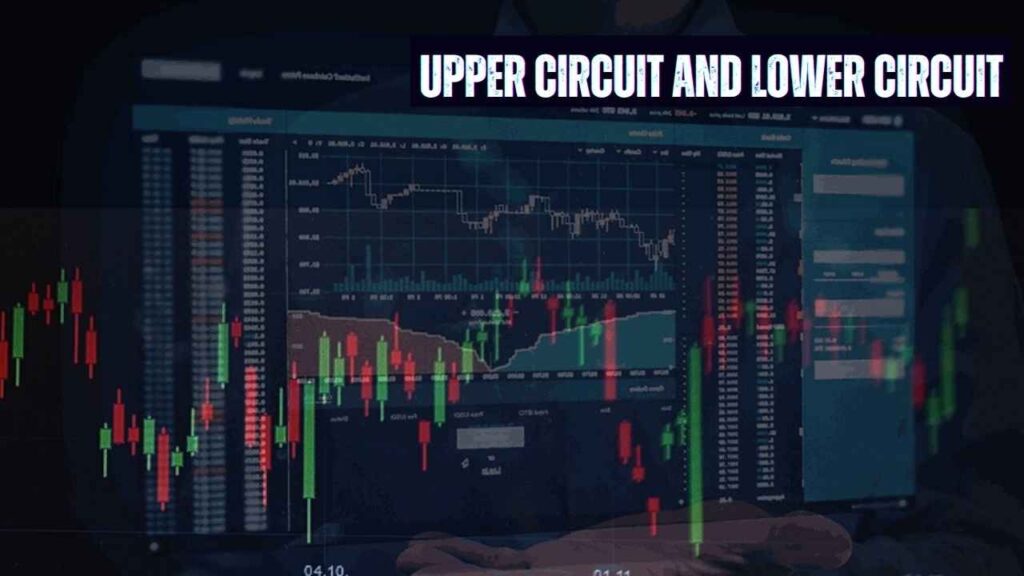All investors need to understand the dynamics of the stock market, and two fundamental concepts that contribute significantly to market volatility are the Upper Circuit and Lower Circuit. These mechanisms are implemented to avoid wild price movements in a single trading day by capping price movements. In this SEO-optimized blog post, we’ll explore what upper and lower circuits are, how they work, why they are implemented, and the impact they have on market stability and investor behavior.
The share market can be unstable, and abrupt price fluctuations in stocks can cause panic and uncertainty. To control this risk and ensure orderly trading, stock exchanges impose circuit limits. The upper circuit and lower circuit are limits that limit how much a stock’s price can rise or fall during the day. By stopping trading when these limits are hit, exchanges safeguard investors, avoid market manipulation, and ensure overall market stability.
What Are Upper Circuit and Lower Circuit?
Upper Circuit:
An upper circuit is a restriction placed on the maximum price rise a stock can undergo in a trading day. When a stock reaches this upper limit, trading may be suspended temporarily or the price movement is curbed, and further price rises are stopped.
Lower Circuit:
A lower circuit, by contrast, is a restriction on the extent to which a stock can fall in a trading day. When this lower limit is achieved, trading can be stopped or capped so that further extreme falls are prevented.

How Do Upper and Lower Circuits Work?
- Price Limits:
Circuit limits are generally fixed at a percentage of a stock’s previous closing price. For example, if a stock’s closing price was ₹100 and the circuit limit is 10%, the upper circuit will be ₹110 and the lower circuit will be ₹90. - Automatic Trading Halts:
If a stock price crosses the upper or lower circuit, the trading system can automatically stop further trading to allow the market time to stabilize. The halt provides investors an opportunity to evaluate new information and make their next decision without intense market pressure. - Market Mechanism:
The circuit mechanism prevents irrational exuberance or overpanic by making price movement more a function of market fundamentals than speculative flows.
Why Are Circuits Implemented in the Share Market?
1. Prevent Extreme Volatility
Upper and lower circuits assist in regulating wild price fluctuations. By establishing pre-specified limits, the market is stopped from running amok as a result of panic selling or excessive buying.
2. Protect Investors
Circuits serve as a protection for investors by briefly stopping trading during episodes of wild price volatility. This break allows time for investors to digest information and make more sensible decisions, thus minimizing the danger of huge losses.
3. Ensure Market Orderliness
By restricting price fluctuations, circuits maintain a smoother trading process. Such stability fosters investor trust and upholds the integrity of the stock market.
4. Mitigate Market Manipulation
Circuit breaks minimize possibilities for market manipulation as they make it impossible to artificially inflate or deflate stock prices over a specific duration.
Impact on Trading and Investor Behavior
- Investor Sentiment:
When a stock touches its upper circuit, it tends to create a sense of optimism among investors, whereas touching the lower circuit can indicate caution or hidden problems. But these warnings must be taken in conjunction with other market signs. - Trading Halts:
Trading halts related to circuits may lead to trade delays, which might annoy aggressive traders. To the good, these halts prevent cascading price collapses. - Market Liquidity:
Circuit limits can momentarily drain liquidity because trading is halted or limited, impacting the velocity at which trades are made when markets are volatile. - Long-Term Perspective:
For long-term investors, circuit limits are less of an issue since they help guard against short-term market fluctuations. For day traders, being aware of these limits is vital for risk management and timing the entry or exit point.
Final Thought
Upper and lower circuits are crucial mechanisms in the stock market that help keep things stable and safe for investors when the share market is highly volatile. Stopping price movements within a daily limit, these measures prevent wild swings in the market, enabling more orderly and rational buying and selling. Be you a long-term investor or an active trader, learning about how circuits operate can improve your market strategy and enable you to better ride out the inevitable highs and lows of the share market.
Frequently Asked Questions (FAQ)
Q1. What is an upper circuit in the stock market?
A: An upper circuit is a limit set on the maximum price increase a stock can experience in a single trading session. When this limit is reached, trading can be temporarily halted or restricted.
Q2. What is a lower circuit in the stock market?
A: A lower circuit is a limit imposed on the maximum price decline a stock can face during a trading day. Once the lower circuit is hit, further price drops are prevented temporarily.
Q3. Why are circuit limits important?
A: Circuit limits help control extreme market volatility, protect investors from sudden price shocks, ensure orderly trading, and reduce the risk of market manipulation.
Q4. How are circuit limits determined?
A: Circuit limits are typically expressed as a percentage of the previous day’s closing price, such as 10% or 15%, and can vary based on the stock and market conditions.
Q5. Do circuit limits affect long-term investors?
A: Circuit limits are mainly designed to manage short-term market volatility. Long-term investors usually need not be overly concerned with daily price movements but should consider the overall trends and fundamentals.










